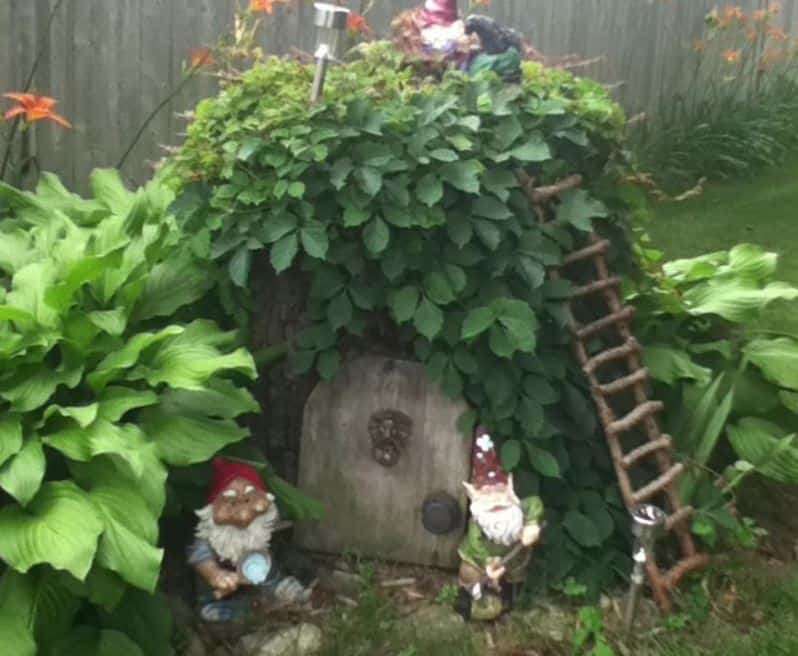It would not come as a huge surprise to learn that gnome-core has become popular given the growth of cottage-core during the pandemic—the warm aesthetic many people found comfort in. It’s the newest, in-vogue style that blends imagination and nature and is ideal for gardening. This is how to make a contemporary gnome garden.

Gnomes in Garden History
These small creatures have existed for a very long period. The classic garden gnomes that have long appeared in flowerbeds are said to have originated in Germany in the 1800s. They are happy tiny guys with white beards that grow long, pointy caps.
However, the history of gnomes is far older and originates in northern Europe. The word “gnome” is said to have originated in ancient Greece and means “earth-dweller,” which is appropriate. In legend, gnomes are little creatures who reside underground and protect the treasure.
According to certain folktales, they would reside in dwellings or barns and keep watch over both humans and animals. This may be the reason why you see gnomes in gardens. They are said to care for crops and gardens at night.
Gnomes, according to myths, are typically 6 inches (15 cm) tall, male (female gnomes are surprisingly uncommon), and live for 400 years. They smoke pipes, are very powerful, and are vegetarian. The fact that female gnomes seldom leave their dwellings may be one factor in your failure to spot any of them.
Are they bad Garden gnomes?
Although each one is distinct and has its personality, some could be nicer than others. A gnome is often seen as a symbol of luck. They protect themselves from it rather than becoming wicked.
But be cautious. You can experience ill luck if you mistreat your gnome or damage a figurine. This makes the current pastime of snatching garden gnomes dangerous.
Garden Ideas for Gnomes Outside
Garden gnomes are more comfortable outdoors, but there is no reason to think having one inside would bring bad luck. They will thrive in your garden, where you may embrace the current gnome core fad and historical mythology. Consider these designs for gnome gardens:
- Gnome figurines: Begin with the fundamentals and welcome some gnomes outside. These small fellas are easy to locate because of their rising popularity. Many choices are available at any home or garden center. Put them where your garden beds are. They would rather be outside than on a porch or patio.
- Animals: Gnomes love the outdoors and are excellent allies for animals. To keep them company, provide some figurines. They adore foxes, badgers, squirrels, birds, insects, and amiable bears, among other animals in the woods.
- Mushrooms: Another component of nature that gnomes like. You don’t have to produce genuine mushrooms, but you should leave them alone if they grow in a natural location with rotting wood. Give your gnomes some imitation toadstools to enjoy in the flowerbeds. Natural
- Plantings: Because gnomes thrive in the natural world, a gnome garden should be less manicured and more uncultivated. Consider native beds or a cottage garden. Don’t strive for neatly trimmed plantings or hedges; let the plants grow a bit wild.
- Gnome Homes: If you’re truly into the craze, build a gnome home base. You may get little figurines of doors, furnishings, and even food to build up residence for tiny garden gnomes, similar to the formerly well-liked fairy gardens. Think about providing your small companions with a bed and all their necessities.
Garden gnomes will always be there, even if gnome core, like previous fads, will probably fade. Since they have adorned homes and gardens for ages, they are a simple trend to follow daily.

